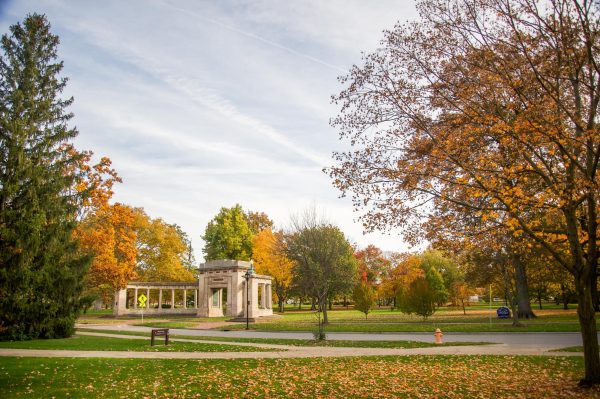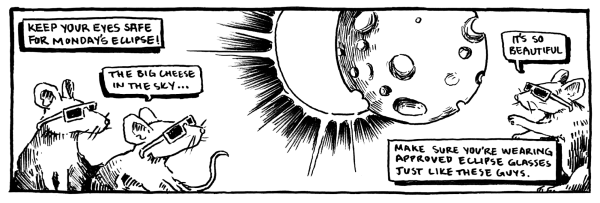Journalism Program Would Revitalize Academics
President Carmen Ambar is future-oriented. She thinks, as she says, in a “doubly futurist” way, in that Oberlin needs to reconfigure its coursework and infrastructure to not only serve children being born today who will be applying for college 18 years down the road, but also to equip them with tools that will allow them to thrive for the decades to come after they graduate from Oberlin. High school students today are questioning the value of a liberal arts education, and we’ve seen the consequences of that doubt in this year’s drop in admissions and retention. In short, we need to redefine the liberal arts education to keep it viable for students’ futures today and in the generations to come.
Although Oberlin certainly provides students with unique world perspectives, it also needs to give students the ability to convey them to the world. How can one person change the world if they don’t have the tools to keep up with the way the world has already changed?
In a pre-internet era, having a liberal arts degree from Oberlin certainly gave journalist alumni the multidisciplinary knowledge to navigate the equally diverse topics that reporters cover. However, several alumni from the Review — many of whom began their careers in journalism before and into the digital news age and have seen changes to what makes journalists employable — have stayed in touch, assuring us that knowing how to write a standard story isn’t enough anymore. Journalists of all kinds need to know how to analyze statistics, code interactive news stories, produce audio and visual media, and how to double in different positions. They need to be swiss army knives of sorts, able to adapt to the rapidly changing technological and increasingly multimedia way news is produced and consumed. If Oberlin students don’t graduate equipped with the tools they need to succeed in journalism — especially given the increasing price tag of an Oberlin education — of course prospective students interested in journalism would look elsewhere for college.
While Oberlin does have some outlets to help students learn about and practice journalism — whether through the Rhetoric and Composition department’s occasional journalism courses or by taking a shot at working for a campus publication — students are largely left to fend for themselves if they want to be journalists. Editors at the Review have personally experienced and seen their writers experience simultaneous interest and trepidation in wanting to enter journalism, and many let fear or doubt in their own ability get the better of them. Furthermore, working as a non-staff member of the Review or for other campus publications is financially inaccessible, since reporting and writing articles takes considerable time with no monetary compensation. The current resources for journalistic growth at Oberlin are therefore limited, and creating a journalism pathway — whether within the Rhetoric and Composition program or separate from it — would be a great stepping stone for students to understand and participate as reporters while also gaining academic credit.
A journalism concentration would include basic reporting classes, much like how the Rhetoric and Composition department offers Journalism Basics and Literary Journalism. It could also allow students to credit existing courses in existing departments towards their concentration if those courses supplement the foundational skills of writing and editing. For example, students could learn fundamentals of audio with courses in TIMARA, coding in Computer Science, and photography in Studio Art.
Combining existing courses and some new ones into a formal program would also deepen existing interdisciplinary ties between departments. Although the College has already developed course clusters in an attempt to do so, a journalism program could be a way of sustaining those bonds in the long term. What better way to demonstrate the value of an intersectional liberal arts education than by structuring more explicitly overlapping and collaborative course work between programs and departments? Even if students don’t end up going into journalism, skills along these lines are valuable and marketable for other careers.
With local news organizations struggling as national media outlets dominate in the digital age, a journalism program at Oberlin could also work to help students and local news organizations in northeast Ohio by forming innovative, mutually beneficial partnerships. Through these, students could get experience in broadcasting, writing and editing, and producing that they cannot necessarily find in a classroom while acquainting them with the importance of local news organizations. This would demonstrate to future students that their time at Oberlin won’t just be defined by grades and interactions with professors, but by participation in meaningful work experience as well. Meanwhile, news organizations in our area who partner with the College could benefit from the work of driven student-journalists. The Chronicle-Telegram has hosted students as newsroom interns in the past, including some editors at the Review. Working to expand and develop these opportunities in journalism, and even in other fields, would set Oberlin apart from its peer institutions in demonstrating that we can put our students in meaningful positions and further develop their work portfolios, leading to tangible jobs after graduation.
Further, Oberlin must be better at communicating the pathways that do exist for student journalists to prospective students, irrespective of creating new programs or initiatives. When parents and prospective students touring Oberlin inquire about the lack of a journalism major, we must have an answer ready, because we believe that if students work hard and craft their Oberlin education with intention, they can learn multidisciplinary journalism here. The problem, as we see it, is in part a failure to effectively relay those possibilities to prospective families, one that could be helped by connecting prospective students with current students pursuing journalism, making it easier to craft individual majors, and creating better mentorship within the Career Center.
Oberlin has produced some stellar journalists. Our alumni have landed positions at The Wall Street Journal, NPR, L.A. Times, Bloomberg, The New York Times, and many other reliable, strong news institutions. These Obies have thrived and pioneered journalistic potentials and standards, creating successful shows like Radiolab and serving as chief White House correspondents. But many of these journalists broke through before students began reconsidering the value of a liberal arts education. If we want to be doubly futuristic — to send prepared, even innovative, journalists out into the world not just today, but 18, 50, or 100 years from now — we need to provide and structure our approach to higher education to cater to the changing nature of post-graduate life and careers.
College is supposed to be a transformative moment in young adults’ lives. Let’s prove to the world that we can do that for our students. But let’s also prove that we can be the transformative force in revitalizing, maybe even revolutionizing, higher and liberal arts education.




